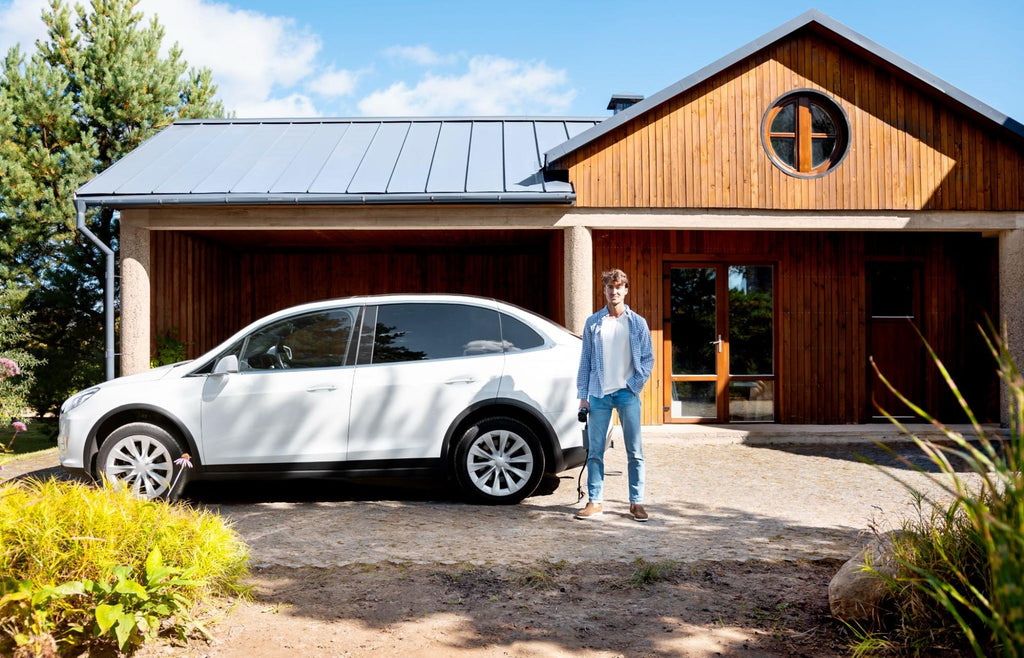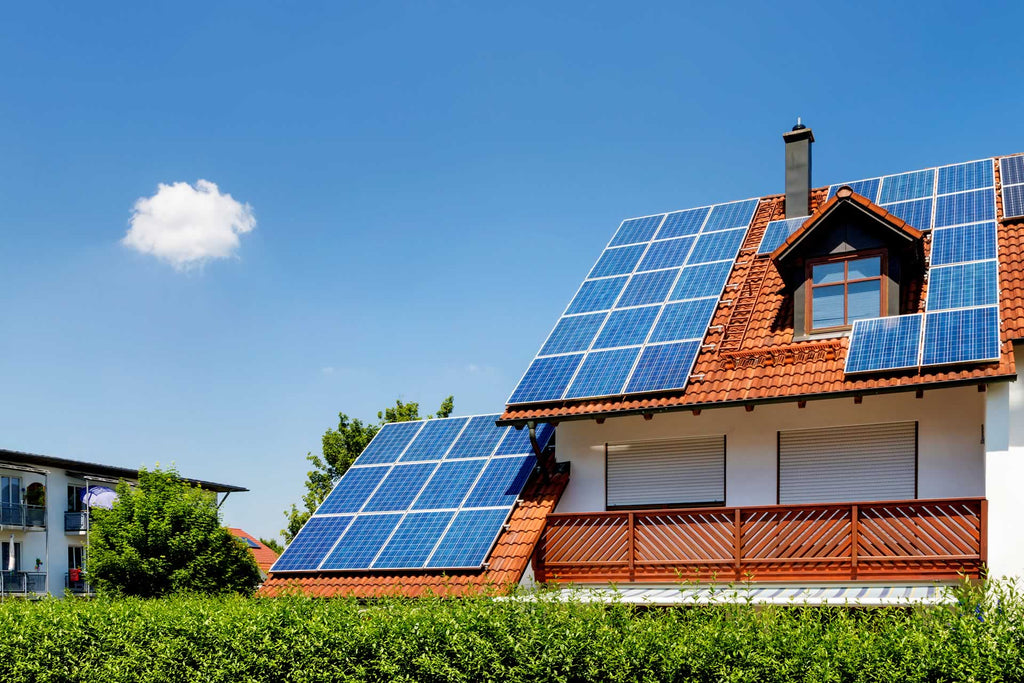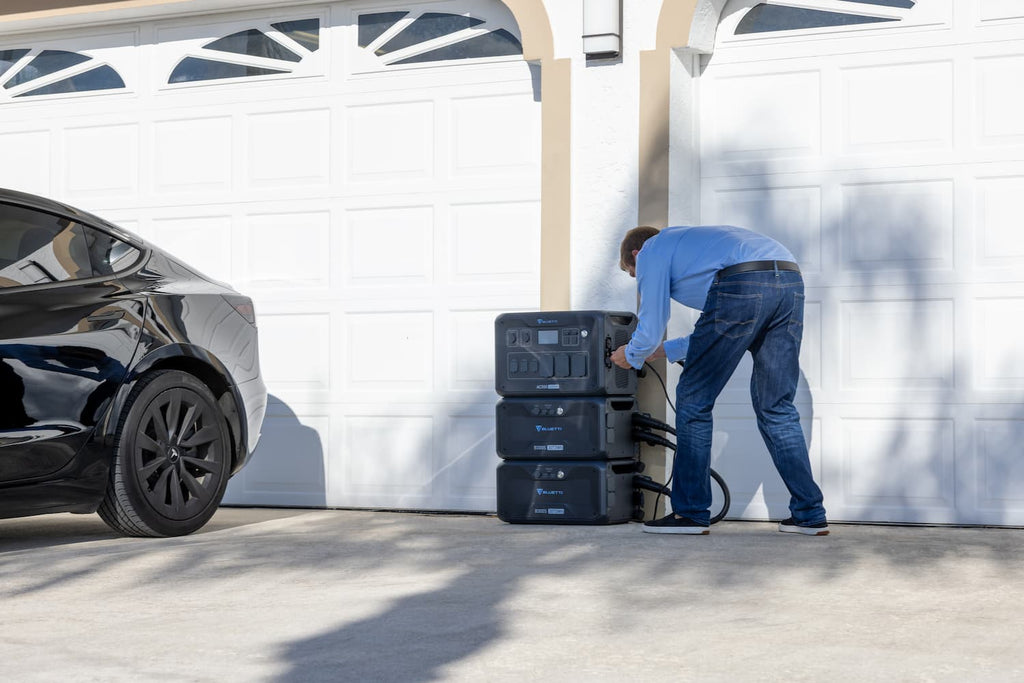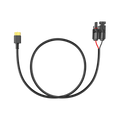Your cart is empty
Shop our productsDo you want to reap the benefits of solar power but with a more aesthetic outlook? Solar shingles are what you could be looking for.
With estimates of around 100 Million homes relying on solar power by the end of 2030, the shift towards solar energy is self-explanatory. However, solar panels are not the only option now. Solar shingles are more delicate options that are replacing solar panels.
But are solar shingles worth it?
Let’s investigate by understanding what solar shingles are, the difference between solar panels and shingles, their associated pros and cons, the cost factor, and how you can choose the best solar shingles for your home.
What Are Solar Shingles?

Firstly introduced in 2011, the solar shingles gained popularity in 2016. However, talking about the US only, as per a survey, 38% individuals still do not have any understanding of this concept.
Solar shingles are modern derivatives of solar panels. Also known as solar tiles, these thin sheets are installed as tiles on the roofs and classified as building-integrated photovoltaics (BIPV). They capture sunlight and convert it into usable electric power. Their working process is the same as that of solar panels.
They can withstand all the harsh weather conditions due to their specific manufacturing which includes the use of tempered glass.
Solar Roof Shingles vs. Solar Roof Panels: What's the Difference?
Solar shingles and panels are both reliable sources for harnessing the sun's power. They can help you cut your energy bills significantly. Though they work on the same principle, some key differences distinguish them.
Below is their brief discussion for a comprehensive understanding.
Size
The standard size of solar shingles is around 1 foot wide and 7.1 feet long. This means for an average roof, 350 solar shingles will be required to cover it completely. Contrary to this, an average household requires around 25 to 35 solar panels depending on the home’s energy consumption patterns and the power output capacity of the panels.
Efficiency ratings

The primary material used to manufacture solar shingles is copper indium gallium selenide, a semiconductor that makes them thin and flexible. The average efficiency of solar shingles varies between 10% and 12%. However, some shingles use monocrystalline silicon, boosting their efficiency to 15% to 20%.
Solar panels can be monocrystalline or polycrystalline. These two materials offer good efficiency ratings, giving solar panels an edge. Monocrystalline panels are considered the best, and their average efficiency rating is above 20%. For reputed brands like BLUETTI, this could even go to 24%.
Further, because solar panels are moveable and can be aligned accordingly with solar radiations, their overall efficiency is higher than that of fixed solar shingles.
Output capacity
The fundamental aim of any solar installation is to convert solar radiation into electricity. Thus, output capacity is a crucial factor. The energy production capacity for solar shingles ranges between 13 and 80 watts, and for solar panels, it could be between 100 and 420 watts.
However, it's important to note that this difference is mainly due to the size. Overall, there are no variations in output capacity.
Aesthetics
Solar panels are mounted on roofs and can easily be noticed. In contrast, solar shingles are more like ordinary roofs, which makes them a more suitable option for the aesthetics of your building.
However, due to the black color of monocrystalline solar panels, their visibility is less than that of the blue color of polycrystalline panels.
Life span and durability
Both the panels and shingles have an average life span of 20 years. However, in terms of durability, solar shingles are more recommended. This is because, unlike solar panels which are installed on the roof, the shingles are a part of the roof and are not vulnerable to being affected by storms and heavy rains.
Pros and Cons of Solar Shingles
Below are the multiple pros and cons associated with solar shingles. You can review them to determine whether they align with your needs.
Pros
- Due to their installation within the roof, the shingles are less susceptible to extreme weather conditions and are more durable.
- The most fundamental benefit of shingles is their aesthetics. They can seamlessly integrate with existing roof structures, particularly asphalt and concrete roofs.
- Unlike solar panels, solar shingles require less maintenance.
- They can be a good alternative to your traditional roofing, boosting the value of your property. Further helping you save significant amounts in terms of your energy bills.
Cons
- Solar shingles are comparatively new in the market, so their widespread availability is a fundamental concern. Depending on your location, you may find it difficult to get a reliable and certified shingle provider.
- Further, talking about their pricing, they are more expensive than panels. As the shingles technology is still evolving, they might not be compatible with your existing roof. In such case, you need a complete redo for their installation, burdening a significant amount to your exchequer.
- The low-efficiency ratings and power output capacity further add to the limitations associated with solar shingles.
Are Solar Shingles Worth It?
Solar shingles are an aesthetic alternative to conventional solar panels. You can install them on your existing roofs or undergo a complete overhaul to reap the maximum benefits. However, their low power output ratings and efficiency are limitations associated with them.
An average US household requires around 900Kw of power monthly. Simply put, if your power needs are higher than this, and you want to go completely off-grid while relying solely on solar power, you might need to revisit your decision.
In another case, they are highly recommended if you have decided to replace your roof. They will not only impart an aesthetic look but also offer free energy, which, according to Forbes, can save up to 40% to 70% of your electricity bills.
How Much Do Solar Shingles Cost?
Solar shingles are a costly option compared to solar panels. The average solar shingles cost varies between $20 and $30 per sq. ft. This will be around $40000—$6000 for a 2000 sq. ft. home.
At the same time, the average total power needs of a 2000 sq. ft. home are around 5Kv, and solar panels for this power will cost around $15000$ to $20000$. However, other factors like the choice of your solar installer and your location can affect the pricing of both shingles and panels.
It is important to note that you can save a significant amount of money through the Federal Tax Credit, which offers a 30% tax rebate on the total price of your solar installation. You can also investigate state incentives for solar installation to decrease the upfront costs further.
How to Choose the Best Solar Shingles for Your Home?
As discussed above, solar shingles require hefty initial costs. A prudent approach is crucial to making your investment worthwhile. Below are some important considerations when choosing solar shingles for your home.
- Depending on the manufacturing material, commonly there are two types of solar shingles available in the market. One utilizes copper indium gallium selenide while the other is made of monocrystalline silicon. The latter are a bit costly but have more efficiency ratings, power output capacity, and shelf life. Thus, they are more recommended.
- Solar shingles are also classified based on their power output capacity. Choose shingles with high output ratings that can fulfill your power needs.
- Installation is a crucial factor as the right installation could help you cultivate maximum from your shingles. While installing, ensure that shingles have access to maximum sunlight.
- Choose solar shingles that are more durable and have a good life span.
- Pricing is another important factor. Shingles require high initial costs that are way more than traditional roofing or solar panels. However, there are also some affordable options available in the market. Price comparison is crucial before opting for any brand.
Choose a Home Battery for Your House
Imagine you have spent thousands of dollars for a reliable power supply but still you have no access to power at night or during low sun visibility. This is exactly what is going to happen if you have not installed an inverter battery backup with your shingles.
You see, as evident from their name, solar shingles offer power only when sunlight is available. Thus, a reliable battery backup system is crucial to store all the extra power produced by your shingles. This can be utilized later on at night or during periods of low sunlight.
While multiple battery options are available in the market, choosing a cost-effective yet reliable unit could be overwhelming. Below are the two most recommended battery options from BLUETTI. They both come with a Price Match Guarantee. This means if you find any unit of the same capacity less priced than them, you can claim the extra amount within 30 days of your purchase.
BLUETTI AC300 + B300

With its 3000W output capacity and 6000W surge power, AC300 could seamlessly power all your household appliances. Its 3072Wh battery capacity will ensure you never run out of electricity. If your needs are still greater, you can extend this capacity to 12288Wh with additional B300 batteries.
This LiFePO4 battery offers 3500+ charge cycles. This means a shelf life of more than 10 years with one charge cycle per day. Overall, the unit has a hassle-free warranty of 4 years with a lifetime of 24/7 customer support.
Other specifications include 7 ways of charging, 15 outlet ports to ensure compatibility with all your appliances and handling through BLUETTI smart app, wifi, and Bluetooth.
BLUETTI AC500 + B300/B300S

AC500 coupled with B300 batteries will surely change how you harness sun power. With an exceptional output rating of 5000W and surge of 1000W, this unlimited energy could power your AC’s to refrigerators and all other home appliances simultaneously.
To ensure, the smooth functioning of your unit, it can be charged through solar, lead acid battery, car battery, AC outlets, and solar+AC. The built-up battery capacity of this unit is 3072Wh. However this can be expanded up to 18432 Wh with additional batteries.
Going further, the LiFePO4 battery is secured with a battery management system (BMS). This means you can operate the system at all temperatures without worrying about malfunctioning. Also, this system ensures a continuous and reliable power supply for your voltage-sensitive devices.
Final Thought
Solar shingles are a good choice to harness sun power without compromising the aesthetics of your home. However, their high initial cost coupled with low efficiency and power output could be an elephant in the room. But with careful planning, these issues can be sorted easily.
While shingles can offer a continuous power supply during peak sun hours, it's important to make sure you never run out of power when solar radiation is not available. BLUETTI home power backups are best in this regard. They are not only cost-effective, but BLUETTI's exceptional international reputation ensures efficient and reliable products for you.
Shop products from this article
Be the First to Know
You May Also Like

What Does a 30% Federal Solar Tax Credit Mean and How to Apply?
Governments around the world are offering programs that encourage homeowners to switch to solar energy. Among the most notable programs is the 30% Federal Solar Tax Credit. It reduces your...

Deadly Flooding Devastates U.S. South and Midwest — What You Need to Know

















































































































































































































































